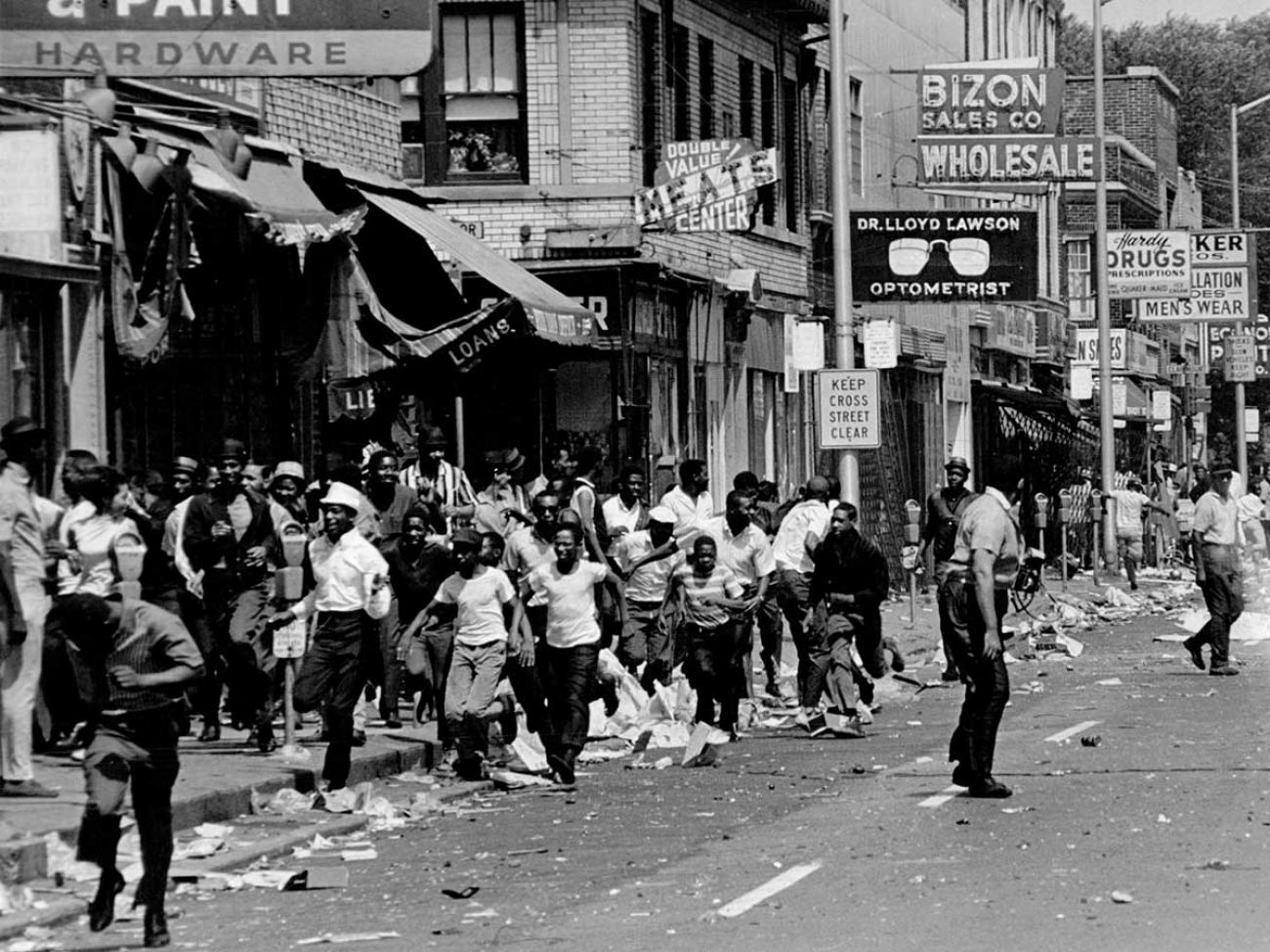The Detroit uprising: 50 years later

Even as smoke drifted over thousands of charred homes and buildings after days of deadly insurrection and looting in Detroit, President Lyndon B. Johnson called upon experts to determine the root cause of racial disorders that swept scores of U.S. cities in the summer of 1967.
Those experts, sitting on what came to be known as the Kerner Commission, reached this haunting conclusion: “Our nation is moving toward two societies, one black, one white – separate but unequal.”
A police raid at 12th Street and Clairmount on Detroit’s west side had ignited a firestorm of long-suppressed rage. Rage at a nearly all-white police force notorious for brutalizing and humiliating people of color; at a political structure that marginalized the voices of African-American residents; at schools and neighborhoods that kept integration at bay, and at a future with little prospect for black advancement. So it was that a confrontation at one Detroit intersection led the city to another: decades of economic policies, political campaigns, crime initiatives and social movements, mixed with no shortage of heartache, all meant to reverse the tide of history.
CHAPTER 1 - POWER
A quick guide to the 1967 Detroit riot
In an African-American city, black clout wanes
The Kerner Commission, and why its recommendations were ignored
Political power, but prosperity remains elusive
CHAPTER 2 - POLICE
In a city with long memories of racial torment, Detroit’s police chief seeks to turn a corner
Police brutality: The struggle isn’t over
CHAPTER 3 - POVERTY
Poverty and joblessness, fuel for '67 riot, even worse today
A brief history of poverty and jobs in Detroit
Detroiters in poverty face nearly insurmountable obstacles
“I watched an old black man cry”
Poverty: A pathway to prison (video)
CHAPTER 4 - RACE
Metro Detroit racial divide is widest over police
DJC Poll: Black and white optimism on Detroit-area race relations
CHAPTER 5 - SCHOOLS
School choice, metro Detroit’s new white flight
Hatch contest leans toward white winners in majority black Detroit
Walking back segregation in Ferndale schools
CHAPTER 6 - JUSTICE
Three prison reform ideas drawing bipartisan support
The War on Crime, not crime itself, fueled Detroit’s post-1967 decline
African Americans wrongfully convicted at higher rates
CHAPTER 7 - HOUSING
Black flight to suburbs masks lingering segregation in metro Detroit
Tax Foreclosures Hurting Detroit’s Recovery
VIDEO: The Bridge Comes to Delray
CHAPTER 8 - THE BLIND PIG
He started the Detroit riot. His son wrestles with the carnage.
See what new members are saying about why they donated to Bridge Michigan:
- “In order for this information to be accurate and unbiased it must be underwritten by its readers, not by special interests.” - Larry S.
- “Not many other media sources report on the topics Bridge does.” - Susan B.
- “Your journalism is outstanding and rare these days.” - Mark S.
If you want to ensure the future of nonpartisan, nonprofit Michigan journalism, please become a member today. You, too, will be asked why you donated and maybe we'll feature your quote next time!

